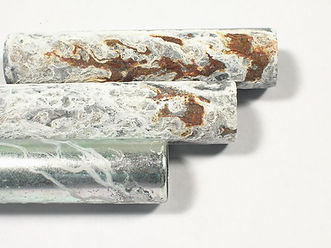
Automotive Interior Testing
Chemical Resistance

Chemical resistance testing of automotive interior components is important to ensure materials can withstand exposure to substances like cleaning agents, lotions, beverages, fuels, and oils without degrading or losing functionality. Commonly tested materials include plastics, textiles, leathers, foams, paints, and adhesives used in components such as dashboards, seats, armrests, and door panels. Ensuring chemical resistance prevents discoloration, cracking, or swelling, extending the lifespan of the vehicle’s interior.
Chemical resistance tests of automotive interior components are performed by exposing materials to various chemicals they may encounter during their use, such as cleaning agents, fuels, oils, and beverages. The components are typically coated, immersed, or sprayed with these substances and then subjected to specific conditions like elevated temperatures or extended durations to simulate real-world exposure. After testing, the materials are inspected for discoloration, degradation, swelling, or loss of mechanical integrity to ensure they can maintain their appearance and functionality when exposed to common chemicals.
Common Test Methods and Standards
AATCC Test Method 6 Colorfastness to Acid and Alkalis
AATCC Test Method 15 Colorfastness to Perspiration
AATCC Test Method 118 Oil Repellency: Hydrocarbon Resistance ASTM D543 Standard Practice for Evaluating the Resistance of Plastics to Chemical Reagents
ASTM D896 Standard Practice for Resistance of Adhesive Bonds to Chemical Reagents
ASTM D2322 Standard Test Method for Resistance of Show Upper Leather to Artificial Perspiration
ASTM D1308 Standard Test Method for Effect of Household Chemicals on Clear and Pigmented Coating Systems
BMW GS97034-5 Surface test of motor vehicle interior materials – Resistance to cleaning agents (Test procedure A: – Abrex method)
BMW AA-0055 Chemical Resistance of Test Surfaces
BMW AA-P 194 Chemical Resistance of Automotive Parts
BMW GS 95003-5 chemical resistance
Ford FLTM BO 101-05 Determination of Fuel Resistance of Plastic Parts
Ford FLTM BI 113-06 Test Method for Resistance to Perspiration
Ford FLTM BI 113-08 Resistance to Sunscreen Lotion and Insect Repellant
Ford FLTM BI 113-07 Resistance to Synthetic Perspiration Staining Ford FLTM BI 109-01 Visual Appearance Evaluation
GMW14445 Sunscreen and Insect Repellant Resistance
GMW14334 Chemical Resistance to Fluids
FCA/Stellantis D23 5201 Coatings for Interior Plastic Parts Decorated – Behavior with Creams and Lotions
FCA/Stellantis LP-463PB-31-01 Resistance to Various Fluids
FCA/Stellantis LP-463PB-57-03 Automotive Fluids Staining of Plastics VDA 675-301 Elastomer Compatibility - Determination of the Behaviour Against Fluids
VDA 230-228 Surface Materials for Automotive Interiors Testing of Resistance to Disinfectants
Volvo STD 423-0011 Chemical Resitance – Hot Plate
Volvo STD 423-0029 Chemical Resitance: Alkaline Cleaning Agents Vovlo STD 1026,8177 Chemical Resistance, Surface Treatments
Why is testing necessary for automotive interior components?
Types of Materials Commonly Tested
Seating •Leather (natural and synthetic) •Fabric upholstery •Foam padding •Seat frames and mechanisms •Stitching and thread •Heated/ventilated seal components Dashboard •Plastics (ABS, PVC, polyurethane) •Soft-touch coatings •Plated plastic trim •Displays •Vents and HVAC controls •Adhesive layers and bonding materials Instrument Panel •Cluster displays •Buttons, knobs, and switches •Touchscreen surfaces •Backlighting components •Haptic feedback mechanisms Center Console and Door Panels •Plastic trim and bezels •Leather or synthetic coverings •Cup holders, storage compartments •Electronic components (USB ports, chargers) •Armrest materials and padding Wood, metal, or carbon fiber accents •Window switchgear and buttons •Interior door handles and lock mechanisms Steering Wheel •Leather wrapping or synthetic materials •Metal and plastic structural elements •Control buttons •Heated steering components •Airbag cover materials Flooring and Mats •Carpet fibers •All-weather rubber mats •Sound-dampening materials •Floor insulation layers Roof Liner •Fabric liners •Sunroof or panoramic roof trim •Insulation and soundproofing materials Interior Lighting •LEDs and backlighting modules •Ambient lighting strips •Dome and reading lights

